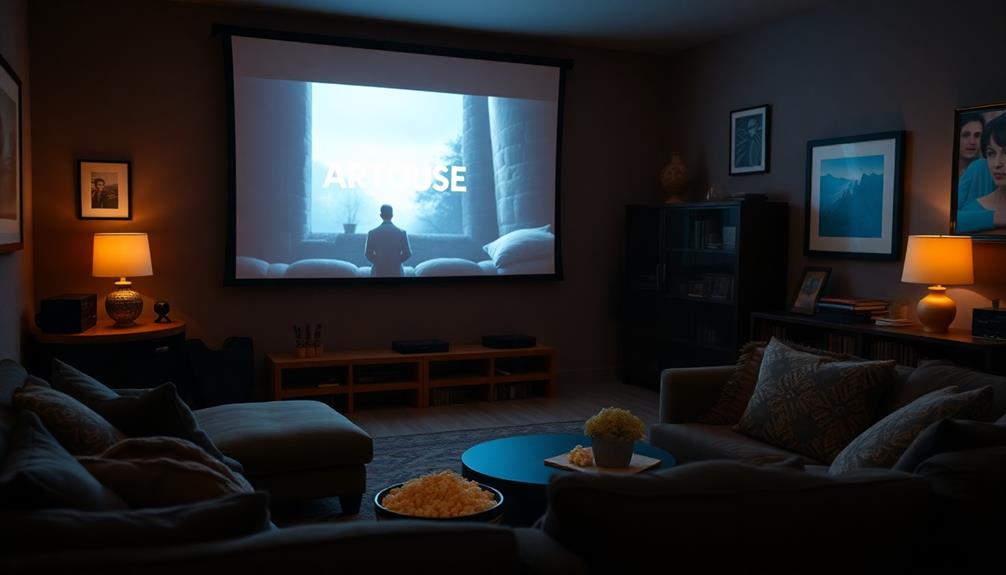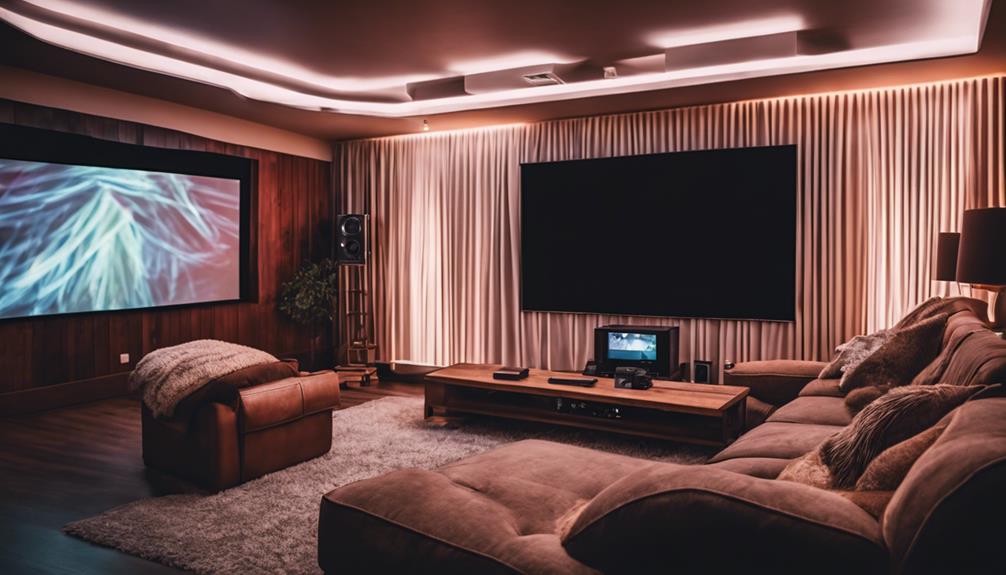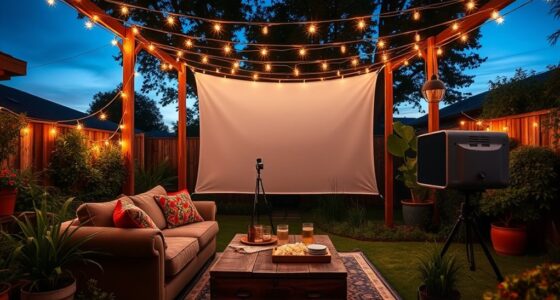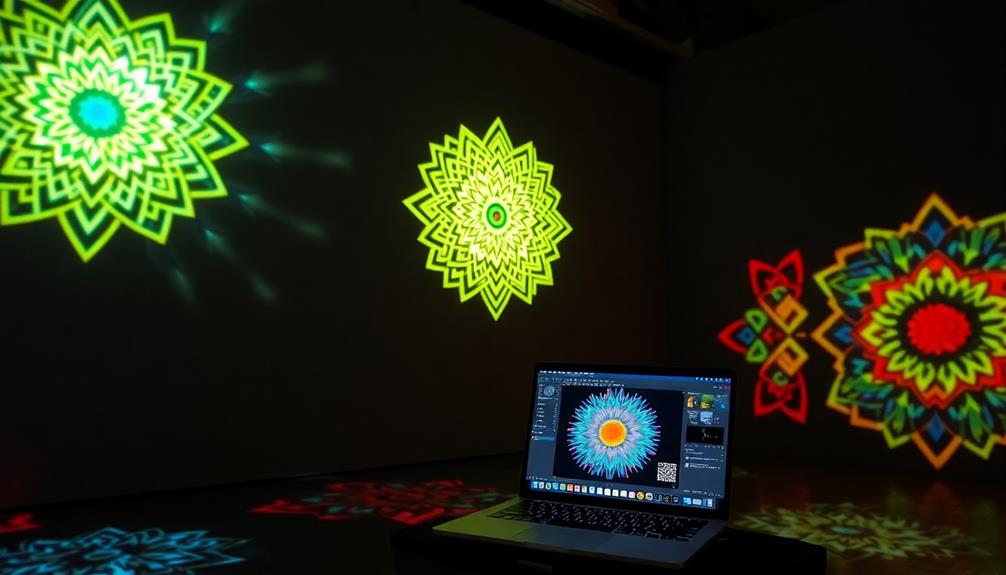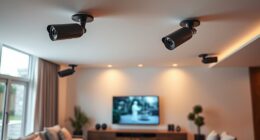You can access arthouse films at home through various streaming services that cater to diverse tastes. Criterion Channel and Mubi focus on classic and independent cinema, with Mubi offering a new film daily. Kanopy provides free access to thousands of films via library partnerships, while Fandor specializes in indie films for an affordable subscription. For recent releases, platforms like Amazon Prime and Vudu have the latest arthouse titles available for rent or purchase. By exploring these services, you'll discover unique storytelling that enriches your film experience. Keep exploring to uncover even more options and hidden gems.
Key Takeaways
- Criterion Channel and Mubi offer extensive collections of classic and arthouse films with unique content and daily film rotations for discovery.
- Kanopy provides free access to over 30,000 films through library partnerships, emphasizing educational and cultural enrichment.
- Fandor specializes in independent films at an affordable rate, with half of subscription fees directly supporting filmmakers.
- Kino Marquee and Grasshopper Film support independent cinemas by sharing revenue through film rentals, enhancing access to indie films.
- Major platforms like Amazon Prime Video and Google Play feature recent releases, allowing viewers to rent or purchase new arthouse films quickly.
Overview of Streaming Services
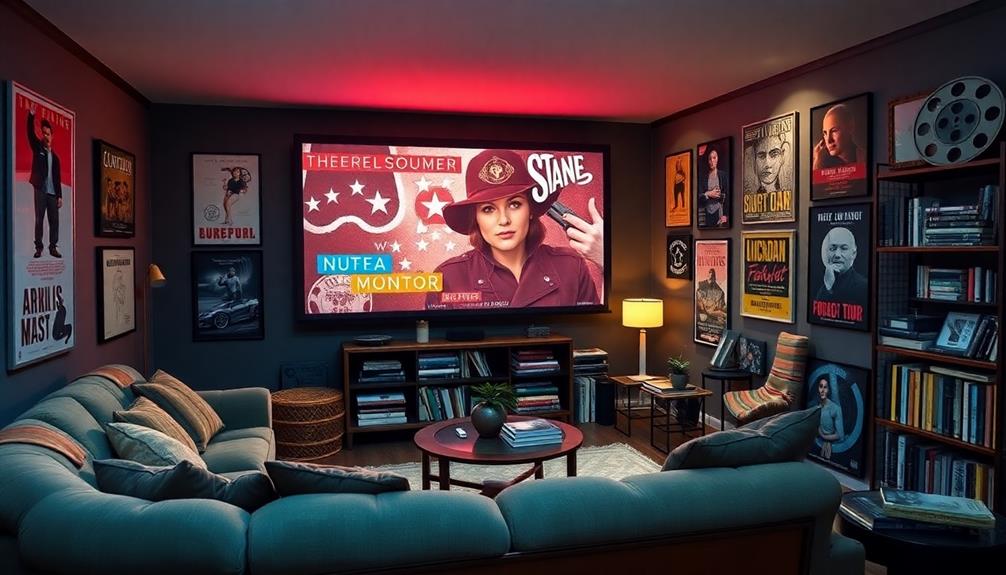
Maneuvering the world of streaming services can be overwhelming, but understanding your options helps you find the perfect fit for your viewing habits.
If you're a fan of classic and arthouse films, services like Criterion Channel and Mubi are tailored just for you. Mubi, in particular, adds a new film daily for a limited time, keeping your viewing experience fresh and engaging.
Understanding aviation regulations is essential for those who want to explore the world of flying, much like discovering the intricate narratives of arthouse cinema.
For those who crave indie and classic cinema, Kanopy offers an incredible advantage: free access to over 30,000 films through partnerships with libraries and educational institutions. This makes it easy to explore lesser-known gems without spending a dime.
If you're interested in a subscription model that emphasizes quality, check out Cinefile, which features curated arthouse films and documentaries available for rental or through monthly plans.
And if you're a horror fan, Shudder's got you covered with exclusive films and thrillers that cater to niche audiences.
All these streaming services promote discovery, offering unique titles you won't find on mainstream platforms, so you can truly indulge in diverse viewer preferences.
Digital Retailers for Recent Releases
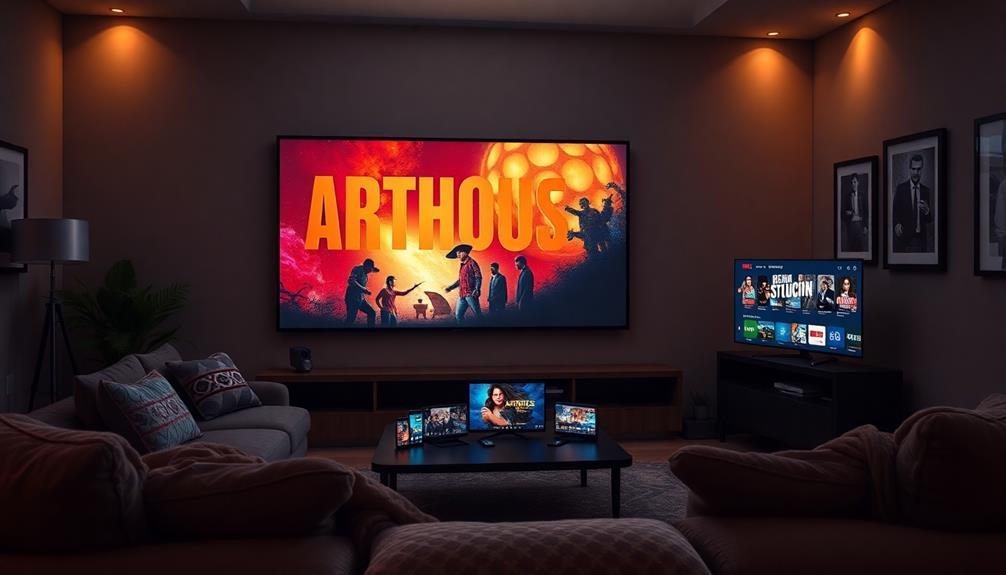
When you're ready to catch up on the latest films after exploring niche offerings, digital retailers are your best bet for recent releases. Major platforms like Amazon Prime Video, Google Play, Vudu, YouTube, and Apple TV provide access to a variety of films shortly after their theatrical debut, with advancements in on-device AI capabilities enhancing user experiences in finding and streaming content.
You can easily rent or purchase recent hits like "Emma," "Birds of Prey," and "The Invisible Man" through these retailers.
Once films are released digitally, availability generally expands considerably, giving you greater access to new titles. You might even find notable films like "Parasite" available on major platforms soon after their release, showcasing the growing trend of digital distribution.
However, be aware that some films may be exclusive to specific digital platforms for limited periods. To make sure you don't miss out on your desired titles, it's crucial to check multiple digital retailers for recent releases.
Art and Foreign Cinema Access
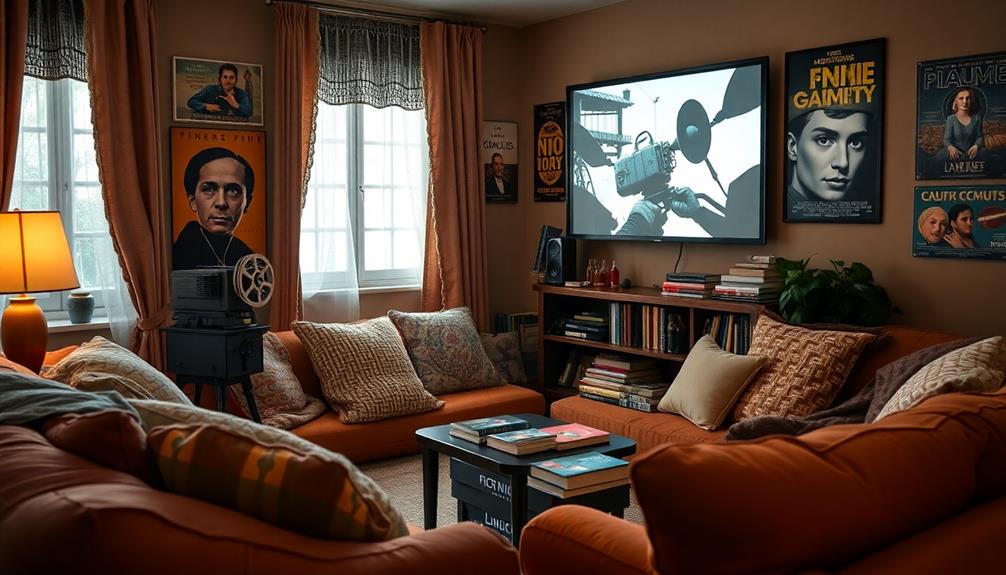
If you're passionate about independent and international films, you're in luck—streaming platforms are making them more accessible than ever.
These services not only provide a wide range of titles but also help support the sustainability of arthouse cinemas, reflecting the growth of sustainable business practices.
Services like Kino Marquee and Grasshopper Film support arthouse cinemas while offering a diverse selection of global titles right at your fingertips.
With options like the Criterion Channel and Kanopy, you can explore a vast array of cinematic experiences without leaving home.
Independent Cinema Platforms
Independent cinema platforms are transforming how you access art and foreign films, offering a wealth of unique viewing experiences right at your fingertips.
These platforms not only support diverse storytelling but also guarantee that independent films and documentaries thrive in the digital age. Additionally, for the best viewing experience, consider using a high-quality projector that enhances image quality and color accuracy, making your home cinema feel more immersive.
With options like top gaming projectors available, you can enjoy rich visuals while exploring these films. Here's what you can explore:
- Kino Marquee – Partnering with independent cinemas, it shares revenue from rentals of films like Bacurau and *Sorry We Missed You*, helping sustain the art film community.
- Grasshopper Film – Immerse yourself in adventurous indie films and documentaries, such as Vitalina Varela, perfect for viewers seeking something out of the ordinary.
- Criterion Channel and Fandor – These subscription services specialize in classic and independent films, providing curated collections that enhance your film discovery journey.
With platforms like Kanopy, you can even access over 30,000 films for free with a library card, promoting educational content and cultural enrichment.
Thanks to the pandemic, you can now watch independent films digitally earlier than ever, bringing the allure of art-house cinema straight to your living room.
Enjoy the rich tapestry of stories waiting for you!
Global Film Accessibility
The rise of independent cinema platforms has greatly improved global film accessibility, particularly for art and foreign cinema. You now have a wealth of options to explore international films that might've been hard to find in traditional theaters.
Services like Kino Marquee let you rent films such as "Bacurau" and "Sorry We Missed You," directly supporting independent cinemas while giving you unique access to arthouse content.
Grasshopper Film offers adventurous selections like "Vitalina Varela," perfect for those seeking bold international cinema.
Meanwhile, subscription services like Mubi and Criterion Channel curate collections of both classic and contemporary arthouse films, enriching your cinematic experience.
If you're looking for free options, platforms like Kanopy provide access to over 30,000 films through partnerships with libraries and universities, allowing you to explore masterpieces and indie classics without breaking the bank.
The pandemic accelerated the digital release of independent films, enabling you to access diverse cinematic voices from the comfort of your home.
With these platforms at your fingertips, you can easily discover and enjoy the rich tapestry of global cinema.
Subscription Services for Curated Films
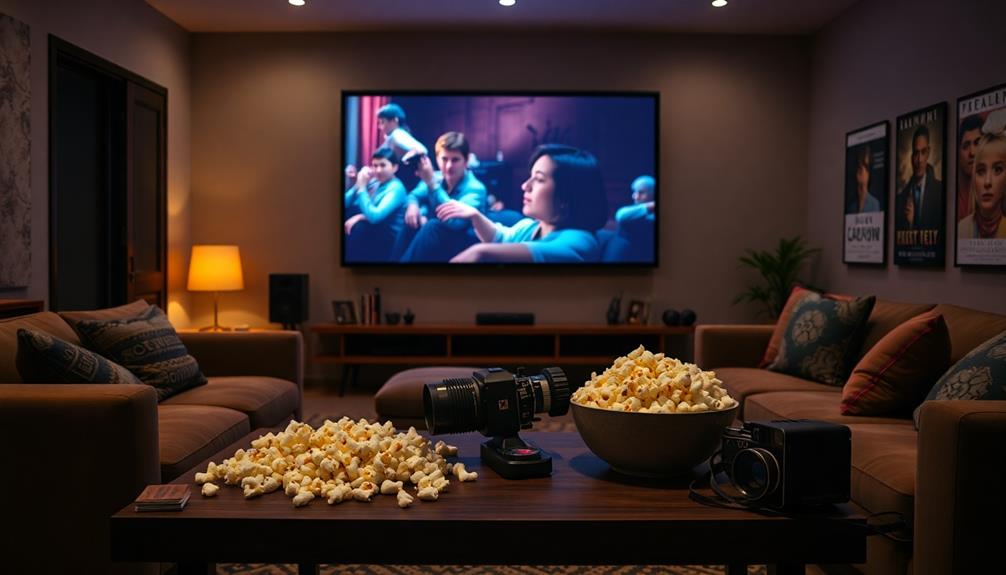
For film enthusiasts seeking a curated viewing experience, subscription services offer a treasure trove of options tailored to diverse tastes.
With so many choices, you can plunge into a world of artistry and creativity from the comfort of your home. Here are three standout services worth considering:
- The Criterion Channel – For just $10.99 a month, you gain access to an extensive collection of classic and contemporary films, complete with exclusive filmmaker commentaries and essays that enrich your viewing experience.
- Mubi – This unique platform adds a new film daily, showcasing 30 curated films each month. You can enjoy a 7-day free trial, allowing you to explore its eclectic offerings before committing to a paid subscription.
- Fandor – Focused on independent films and documentaries, Fandor is an affordable option at $4.99 per month. Plus, 50% of its income goes directly to supporting filmmakers, making it a socially responsible choice.
These subscription services for curated films not only enhance your film library but also connect you with a community that values artistic expression.
Streaming Options Beyond Netflix
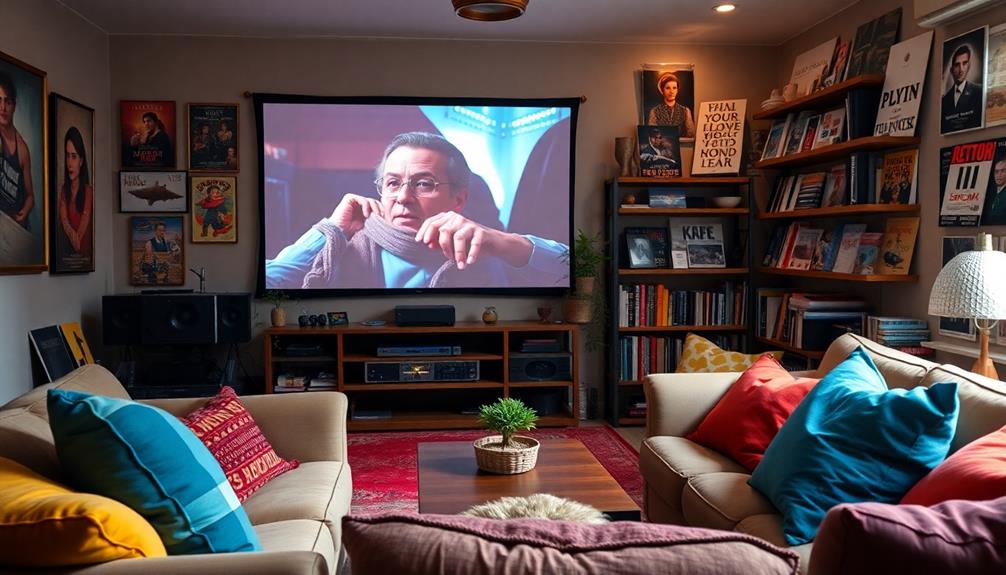
Disney+ may not be your first thought, but it releases unique family-friendly films like "Onward," adding variety to your viewing experience. For fans of niche genres, platforms like Shudder focus solely on horror and thriller films, showcasing works you won't typically find on mainstream services.
Here's a quick look at some options:
| Streaming Service | Notable Arthouse Films |
|---|---|
| Hulu | Portrait of a Lady on Fire |
| Amazon Prime Video | The Last Black Man in San Francisco |
| Disney+ | Onward |
| Shudder | Various Horror Titles |
| Criterion Channel | Classic Arthouse Selections |
With this array of platforms, you can easily access arthouse films and broaden your cinematic horizons.
Importance of Supporting Film Industry
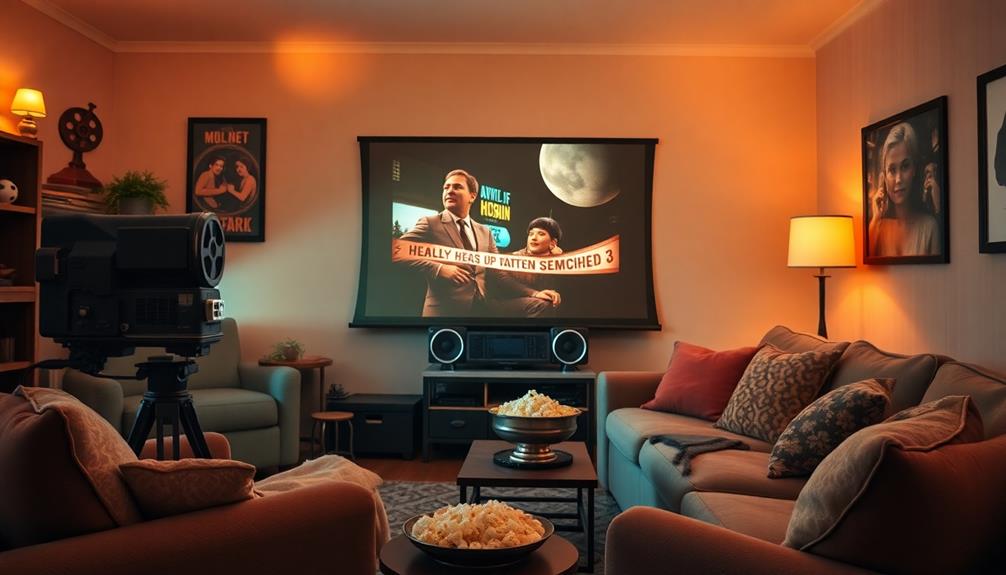
Supporting the film industry is essential, especially as independent and arthouse films often struggle to find their footing against mainstream blockbusters. Subscribing to streaming services that focus on these unique films can make a significant difference. Here's how your support matters:
- Financial Backing: Platforms like Mubi and Criterion Channel provide necessary funding to filmmakers, guaranteeing diverse stories continue to reach audiences.
- Diverse Offerings: By choosing to stream these films, you help create a demand for a wider range of content, including voices often overlooked in traditional cinema.
- Cultural Enrichment: Engaging with curated selections enriches your viewing experience and fosters a deeper appreciation for international cinema and storytelling.
During challenging times, like the pandemic, these subscriptions sustain the film industry and help independent filmmakers survive.
Your choice to stream arthouse films directly influences the availability of these works in the future.
So, when you opt for streaming services that champion independent cinema, you're not just watching a film; you're actively participating in the growth and recovery of a significant artistic community.
Your engagement helps guarantee that unique voices and stories continue to thrive.
Highlights of Popular Platforms
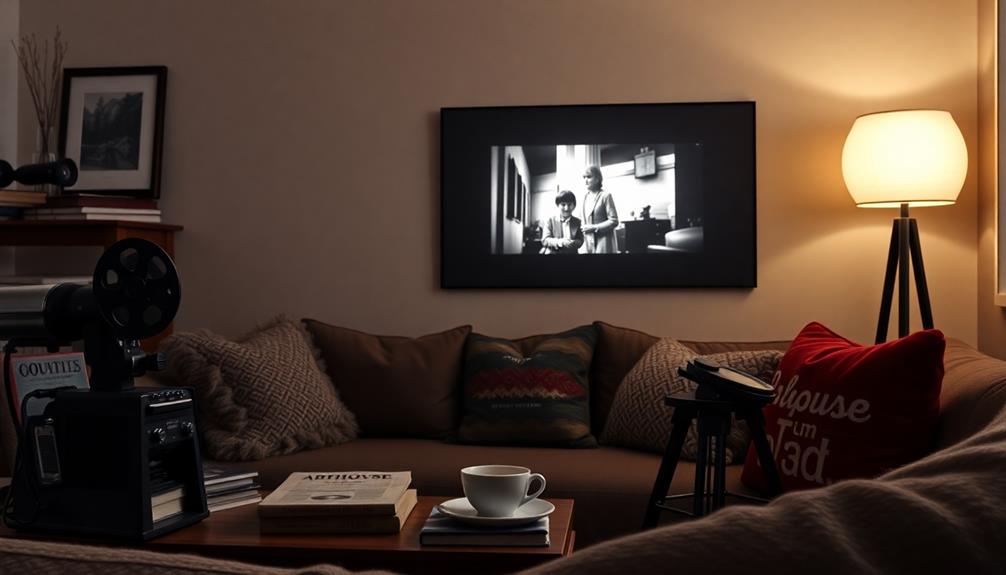
When exploring popular streaming platforms, you'll find key features that set them apart.
Each service offers unique film selections, from classic arthouse gems to niche horror flicks, catering to diverse tastes.
Plus, understanding the subscription costs can help you choose the best fit for your viewing habits.
Key Features Explained
In today's streaming landscape, various platforms cater to diverse tastes, each boasting unique features that enhance your viewing experience. If you're a fan of arthouse films, here are some standout options:
- Criterion Channel: For just $10.99 a month, you gain access to a vast collection of classic and contemporary films. With exclusive features like filmmaker commentaries, it's perfect for those who appreciate a deeper exploration into cinema.
- MUBI: This platform curates a unique selection of films, adding a new title daily. Each film stays available for only 30 days, encouraging you to explore and discover arthouse and international cinema regularly.
- Kanopy: If you're looking for a budget-friendly option, Kanopy provides free access to over 30,000 films through public libraries and universities. It's a treasure trove of classic cinema, indie films, and educational documentaries.
Whether you're interested in exclusive content, a curated experience, or free access through libraries, these platforms offer something for every film lover.
Immerse yourself, and discover the rich world of films waiting for you!
Unique Film Selections
Many film lovers find themselves drawn to platforms that offer unique selections of films, each tailored to different tastes and preferences.
The Criterion Channel is a standout with its extensive collection of classic and contemporary arthouse films, complete with exclusive filmmaker commentaries and essays. For just $10.99 a month, you can dive deep into cinematic history.
MUBI takes a different approach by curating a new film every day, focusing on art house, cult classics, and international cinema. Each film only stays for 30 days, creating a sense of urgency that keeps you engaged.
If you're looking for free access, Kanopy partners with public libraries to provide over 30,000 films, including indie gems and documentaries. Just grab a library card, and you're set!
Fandor specializes in independent films and documentaries at an affordable $4.99 monthly subscription, with a commitment to supporting filmmakers.
Subscription Costs Overview
Steering through the subscription costs of popular streaming platforms can be a game changer for film enthusiasts. Understanding the subscription costs overview helps you choose the right service for your taste and budget.
Here's a quick breakdown of some platforms you might consider:
- Criterion Channel: For $10.99 a month, you gain access to an extensive collection of classic and contemporary films, complete with filmmaker commentaries and essays.
- Mubi: Start with a 7-day free trial, then shift to a monthly fee for curated arthouse and international films.
- Fandor: At just $4.99 a month, you can explore independent films and documentaries while supporting filmmakers, as 50% of your subscription goes directly to them.
If you're looking for free options, Kanopy offers access to over 30,000 films through participating libraries, while Cinefile provides individual film rentals starting at CHF 8.00, with subscription plans for those who want more.
With these options, you can easily find a service that fits your film-watching habits and budget.
Unique Features of Niche Services
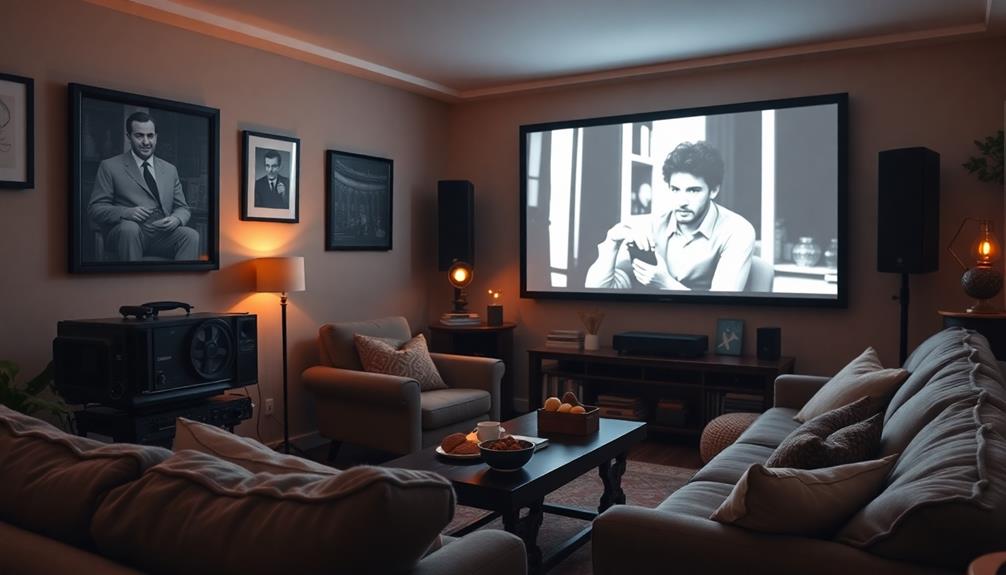
Throughout the streaming landscape, niche services stand out with their unique features tailored to specific audiences. For instance, Mubi adds a new film daily, showcasing a rotating selection of 30 hand-picked films each month. This approach promotes the discovery of unique cinematic experiences that you won't find on mainstream platforms.
If you're a fan of classic and high-end cinema, the Criterion Channel offers a vast collection that caters primarily to North American audiences. It enhances your viewing experience with filmmaker commentaries and essays.
Meanwhile, Kanopy partners with public libraries and educational institutions, providing access to over 30,000 films for free with a library card, emphasizing educational content and cultural enrichment.
For horror enthusiasts, Shudder specializes in horror and thriller genres with a curated collection of exclusive films, handpicked weekly by both fans and expert curators.
Exploring New Releases and Discoveries
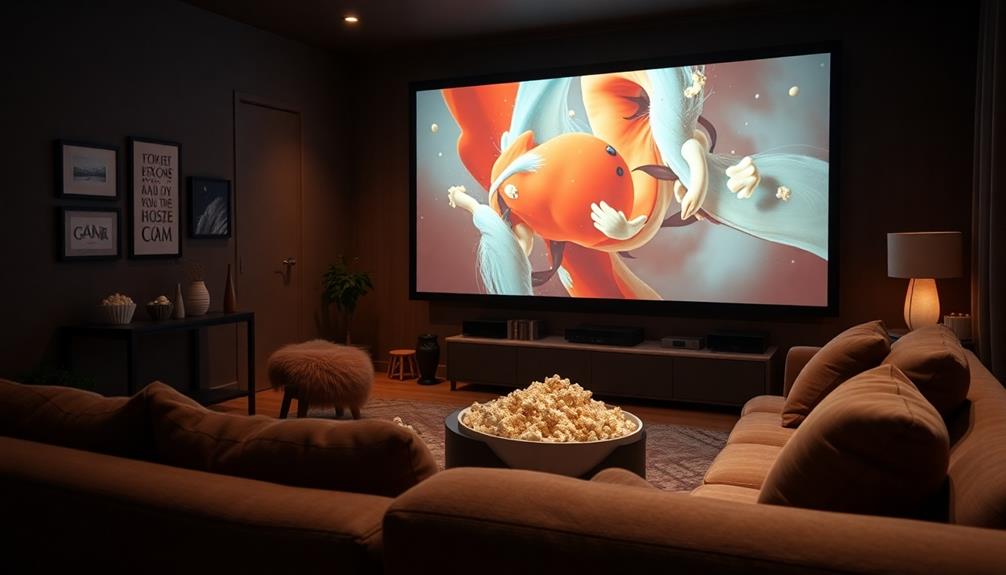
As you explore the ever-evolving world of streaming, you'll find that new releases and discoveries offer exciting opportunities to expand your cinematic horizons.
Whether you're hunting for the latest indie gems or mainstream hits, the options are plentiful. Here are three ways to immerse yourself in the latest offerings:
- Major Platforms: Recent theatrical releases like *Emma* and *Birds of Prey* can be rented or purchased on platforms like Amazon Prime Video and Google Play shortly after their initial run.
- Support Independent Film: Discover unique narratives with titles like *Bacurau* and *Sorry We Missed You* through Kino Marquee, which helps independent cinemas thrive by sharing rental revenue.
- Curated Collections: Services like Criterion Channel and Mubi present carefully curated collections of classic and contemporary arthouse films, enhancing your film discovery experience.
Don't overlook platforms like Kanopy, offering free access to over 30,000 films through libraries, or Cinefile, which features intriguing new films such as *Hit Man*.
Each option enriches your viewing experience, ensuring you won't miss out on the latest cinematic treasures.
Frequently Asked Questions
What Streaming Service Has Art House Films?
If you're looking for arthouse films, check out The Criterion Channel, Mubi, Kanopy, Fandor, or Cinefile. Each offers unique selections, catering to diverse tastes and preferences, so you'll find something that suits you.
Can You Stream Theater Movies at Home?
You can indeed stream theater movies at home! With digital platforms quickly offering recent releases, you'll find plenty of options. Just remember, you might need to check multiple services to catch what you want.
Can You Still Watch Cinema Movies at Home?
Yes, you can still watch cinema movies at home. Many digital platforms now offer recent releases for rent or purchase, and subscription services provide a range of films, ensuring you've got plenty of options.
Is There a Streaming Service for Classic Movies?
Yes, there are several streaming services for classic movies. You can explore Criterion Channel for iconic films, Kanopy for free access through libraries, and Mubi for curated selections that change daily. Enjoy your cinematic journey!
Conclusion
As you navigate the world of streaming services, remember that accessing arthouse films isn't just about finding a hidden gem; it's like hunting for vinyl records in a digital age. By exploring various platforms and supporting the indie film industry, you're not only enriching your own viewing experience but also helping these unique stories thrive. So, grab your popcorn, immerse yourself in those curated collections, and discover the artistry waiting for you in the comfort of your home!
Hello, I’m Art, and I’m excited to be a part of the 1Home Theatre Projector team. As a writer, I’m here to contribute my knowledge and insights to help you achieve the ultimate home cinema experience. I understand that making decisions in the world of home entertainment can be complex, and I’m here to simplify the process for you.
